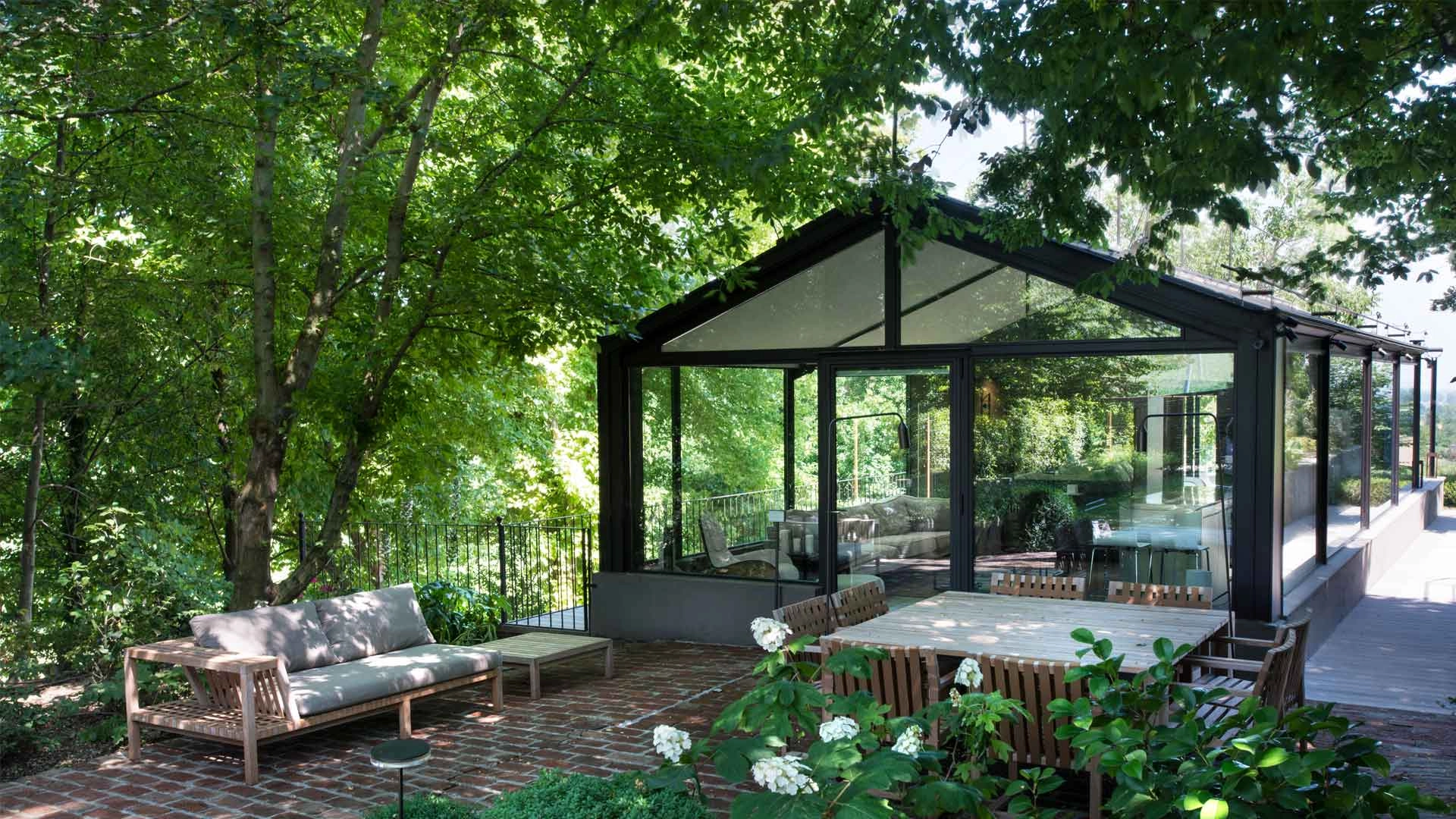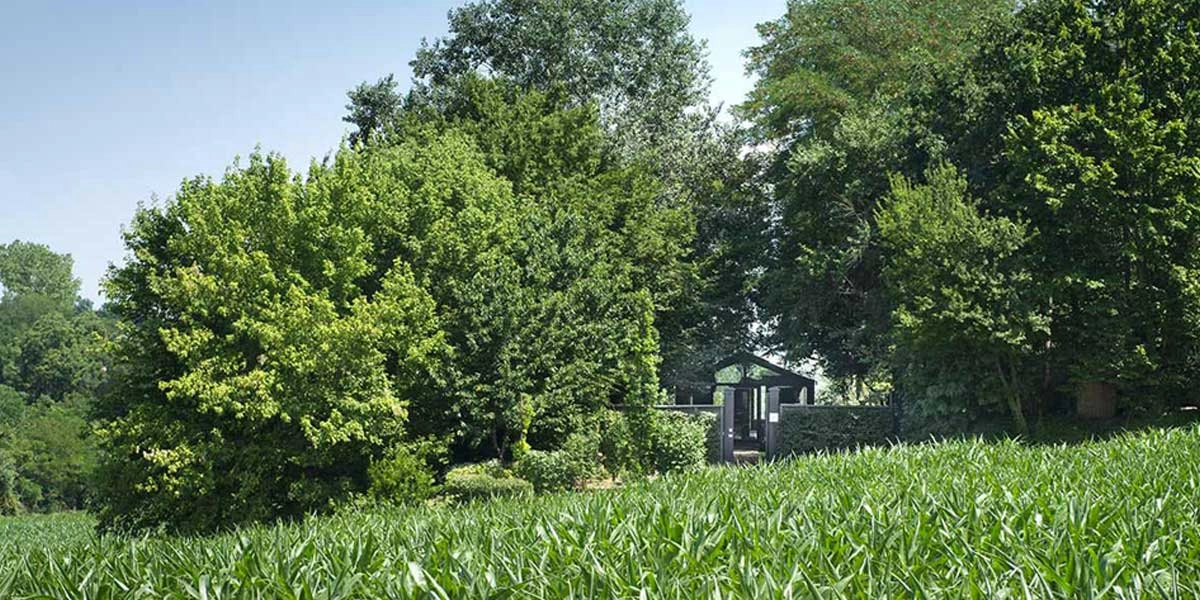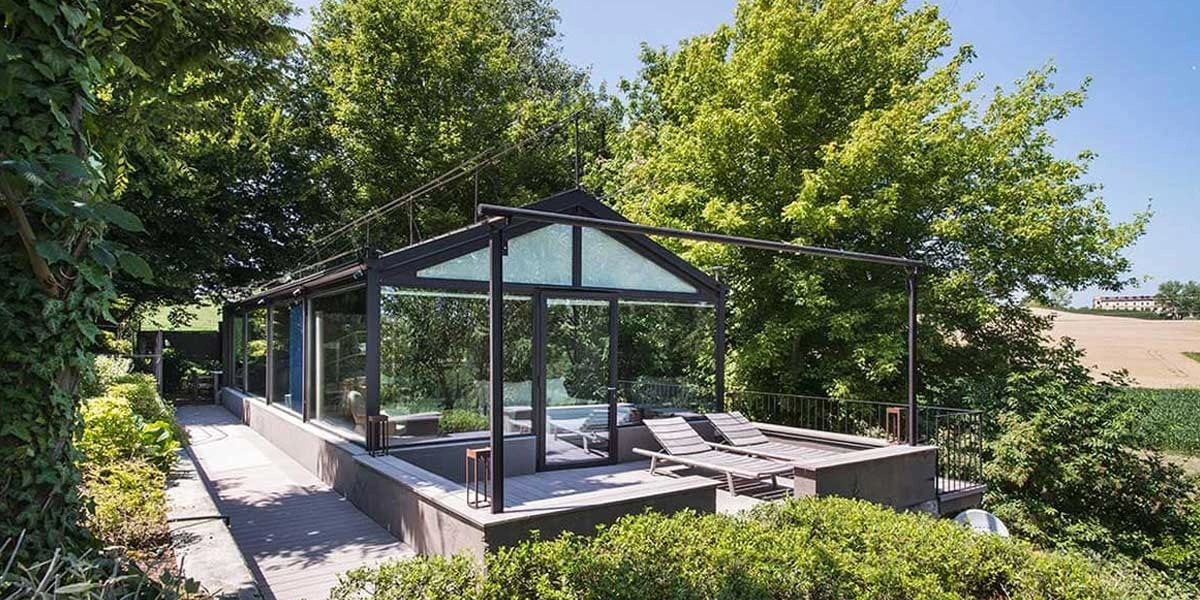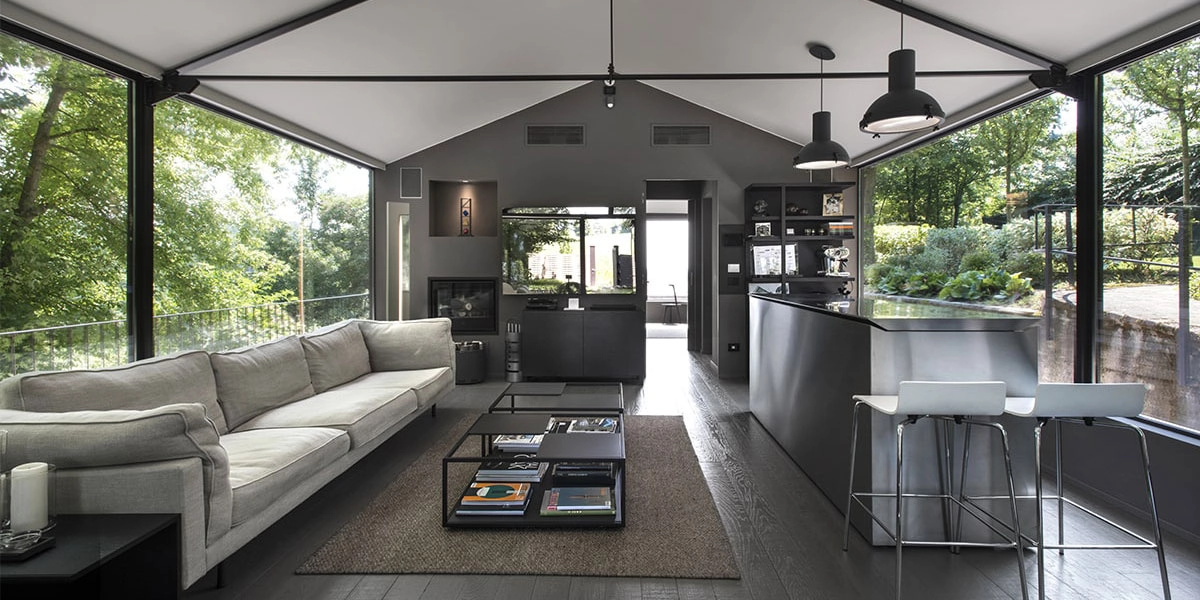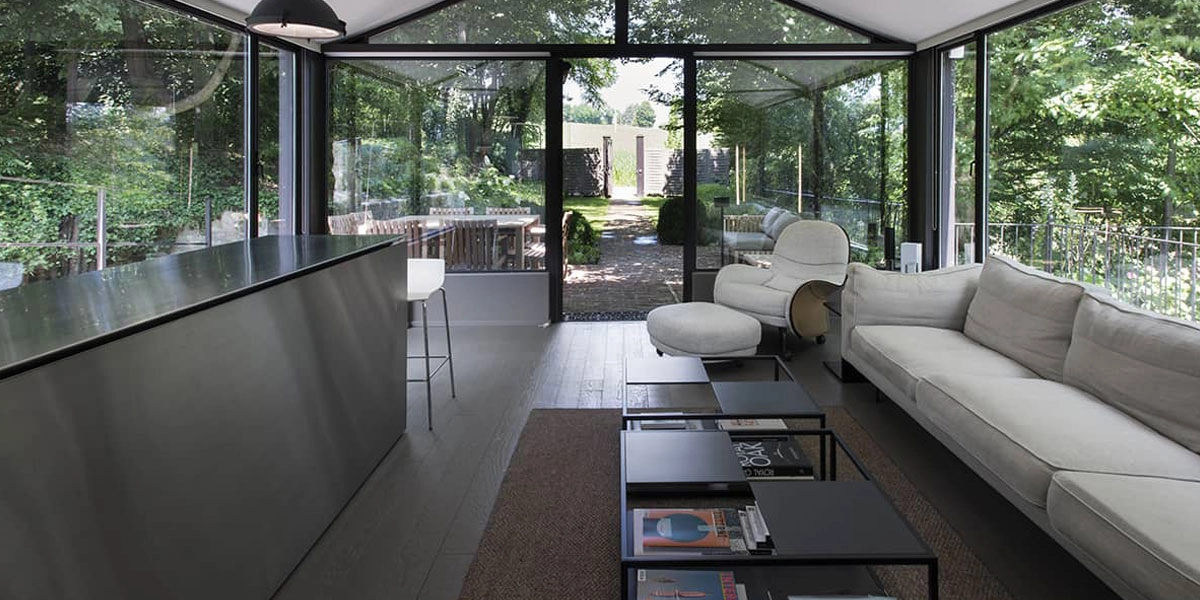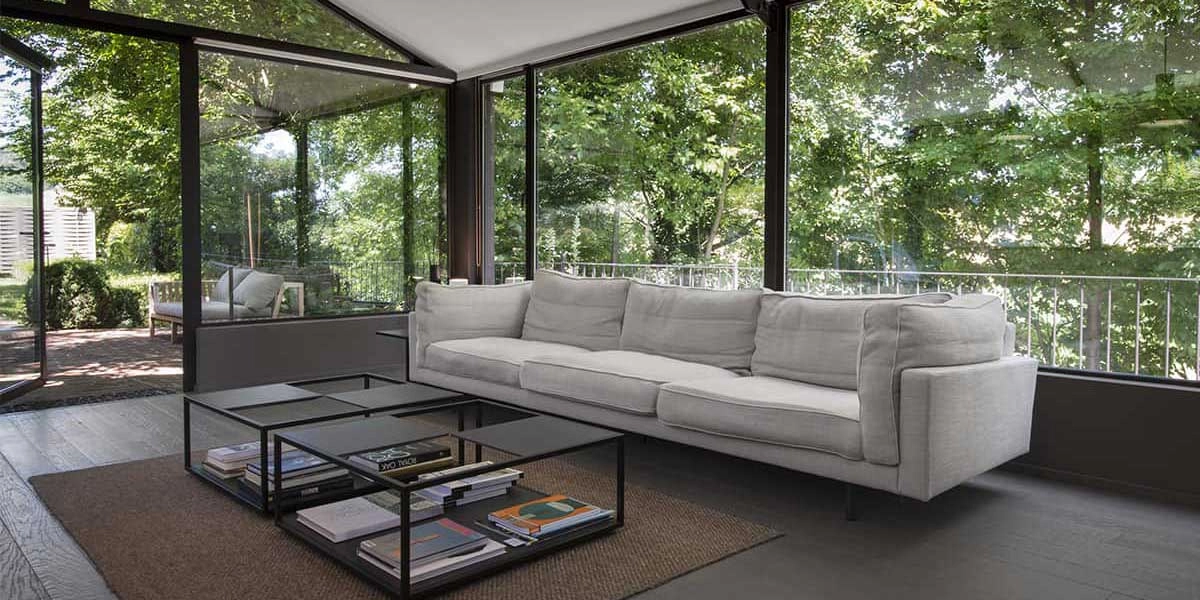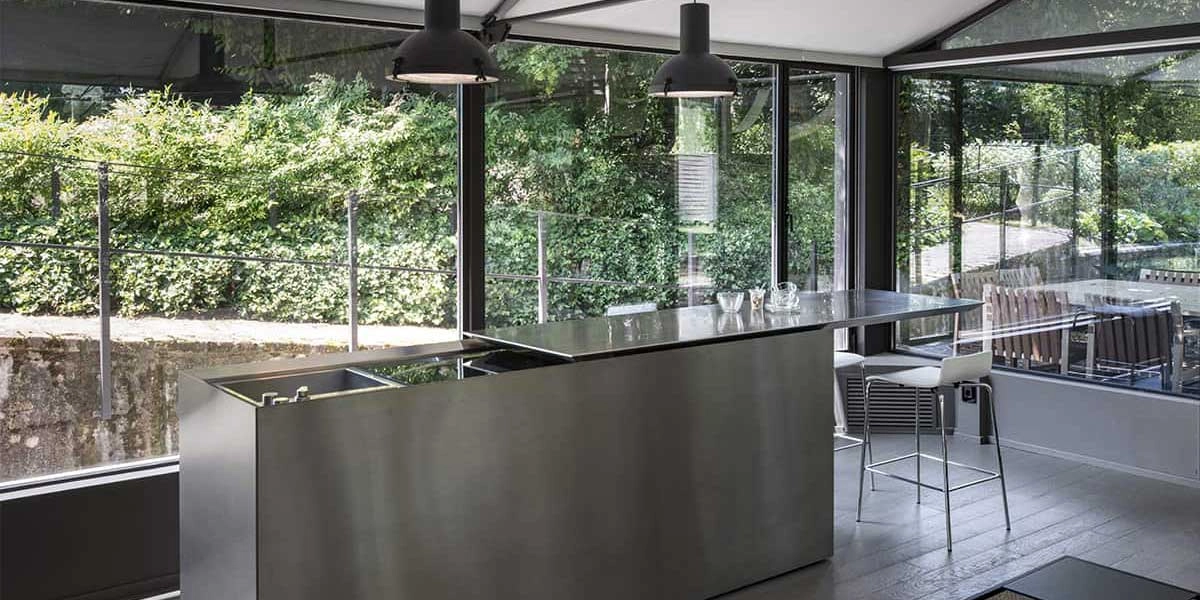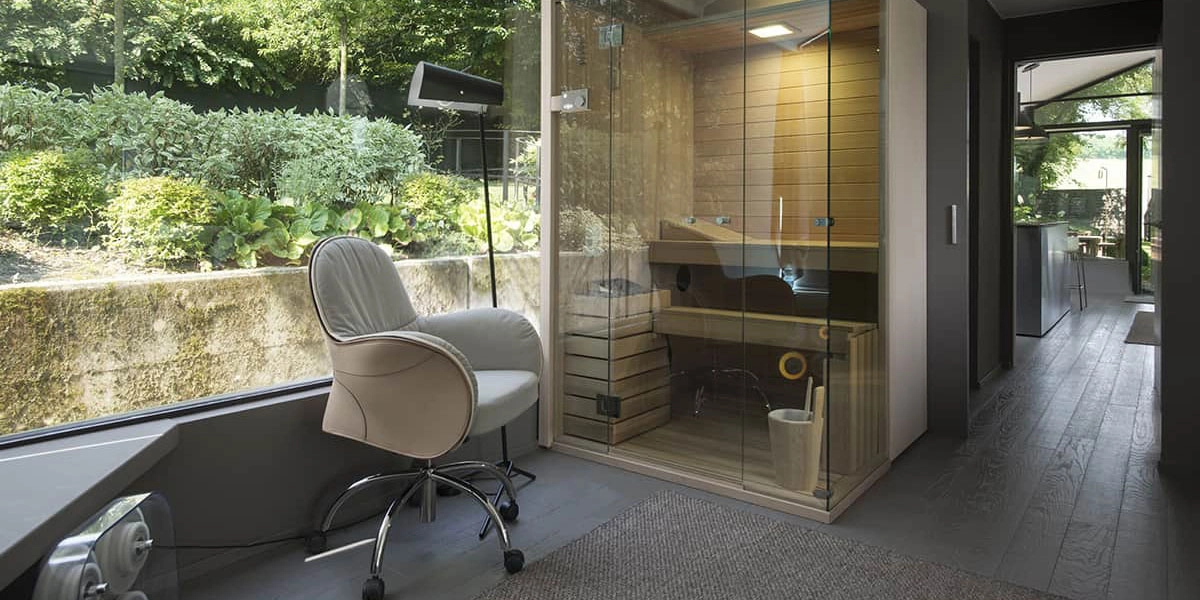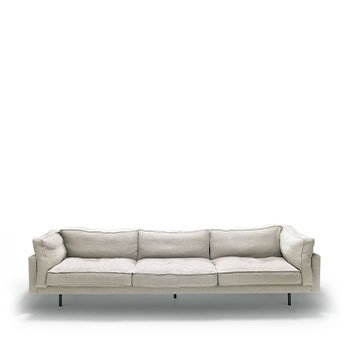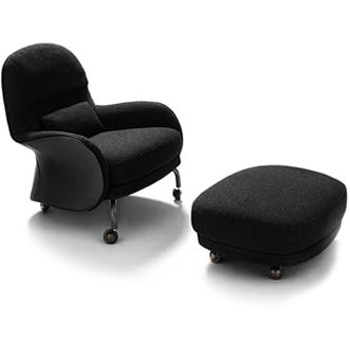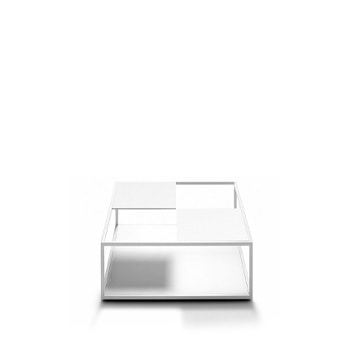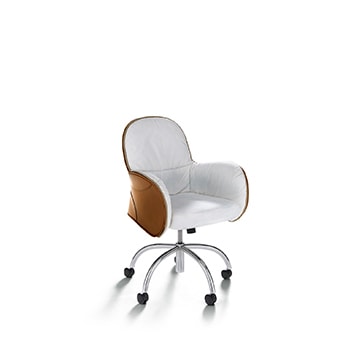Completely transparent to the landscape, the house sits on a hill, positioned in the heart of a valley in Lower Monferrato, a land of truffles, fine wines, cuisine, and millennia-old traditions, recognized as a UNESCO World Heritage Site since 2014.
The concept stems from the regeneration of an old lemon house in a panoramic location surrounded by a large garden, which for years was used solely to protect lemon trees during the winter.
The renovation project was led by Piero Lissoni in collaboration with architect Carlo Alberto Maria Caire, responsible for the structural design and construction supervision. The pre-existing structure was completely rebuilt using eco-sustainable materials, large glass walls, wood, and steel, alongside the latest generation photovoltaic panels.
The interior spaces reflect an elegant and refined modern living room design, thanks to minimalist and essential furnishings. In the living area, the Square 16 sofa and the Louisiana armchair (designed by Vico Magistretti) stand out, paired with the refined Japanese Tetris coffee table (designed by Nendo), creating a welcoming and understated space. The Serbelloni armchair completes the area, adding a touch of sophisticated elegance to the setting.
This residence transforms into an exclusive suite, allowing for intimate contact with nature in complete privacy and comfort, thanks to advanced yet simplified home automation.
The Glass House draws inspiration from iconic creations by great architects, such as Frank Lloyd Wright’s Fallingwater, Mies Van Der Rohe’s Farnsworth House, and Philip Johnson’s Glass House.
Technology and comfort blend seamlessly with the distinctive character of the home, particularly defined by the sloping roof, retained from the original structure to preserve the building’s unique identity and connection to the local territory.
